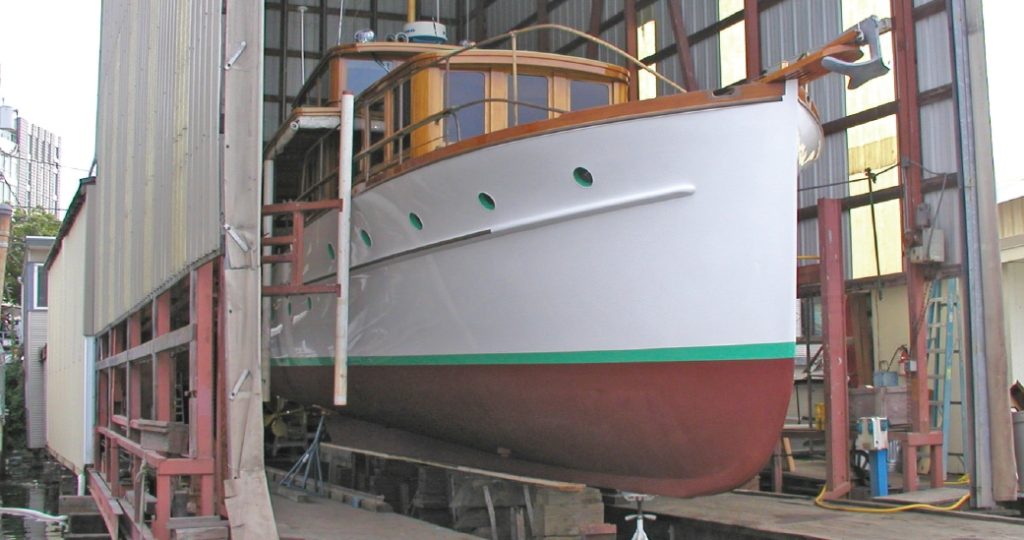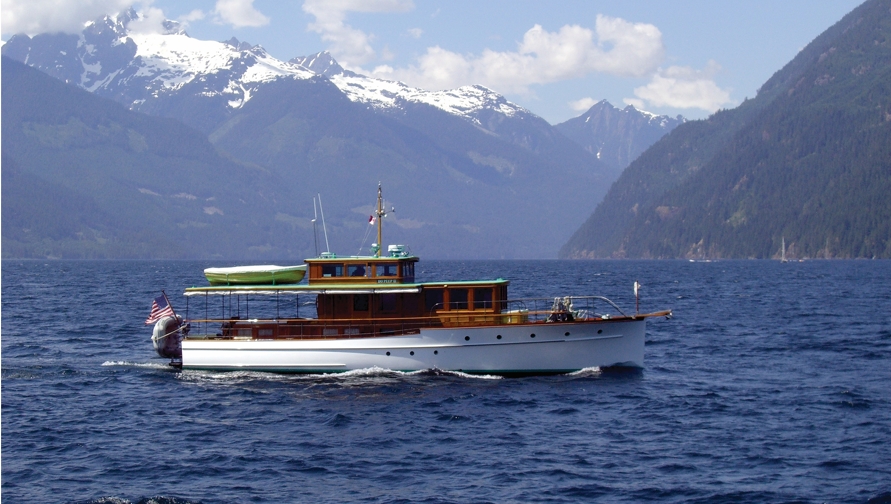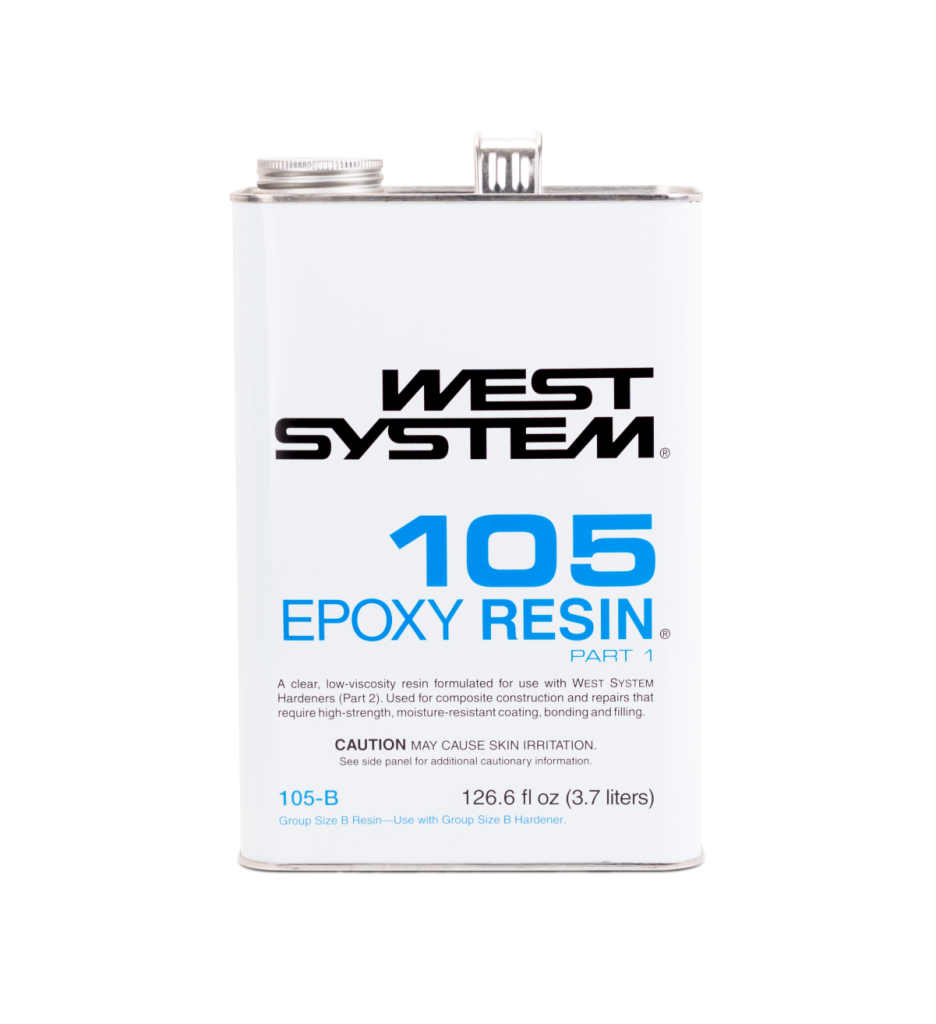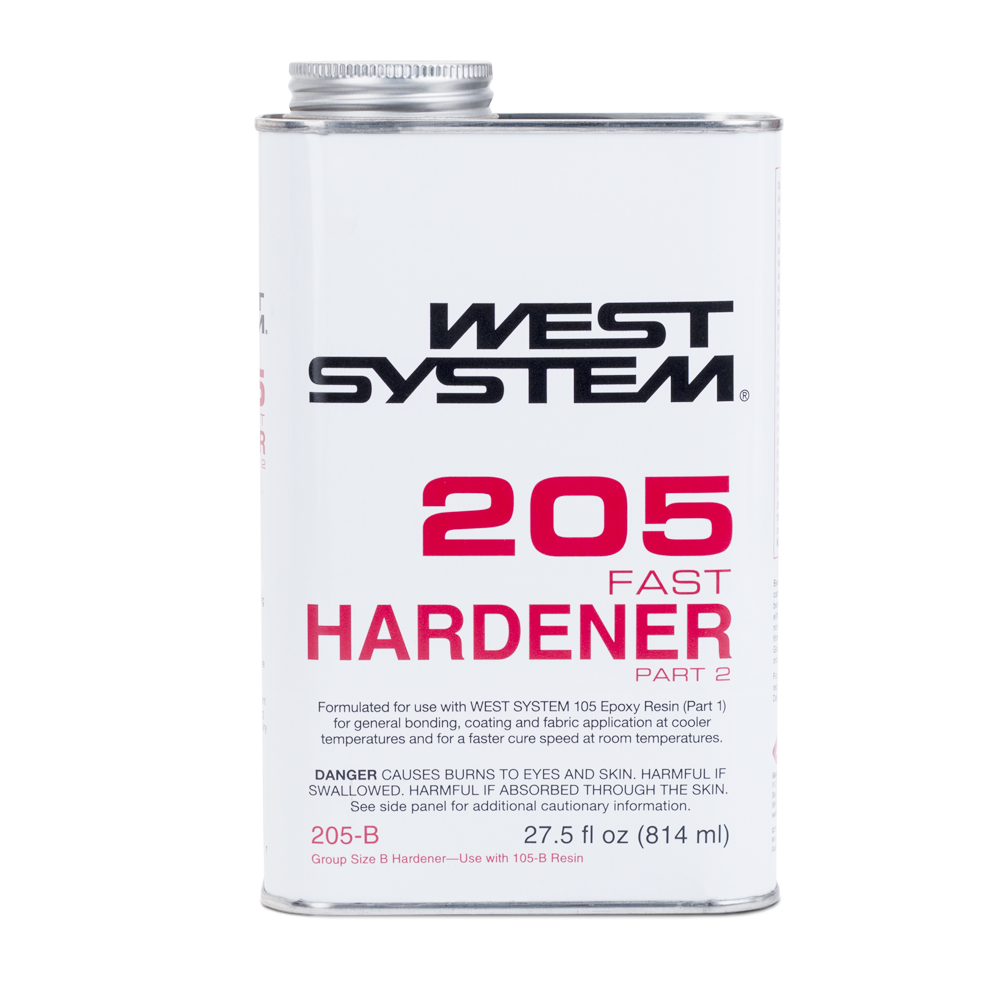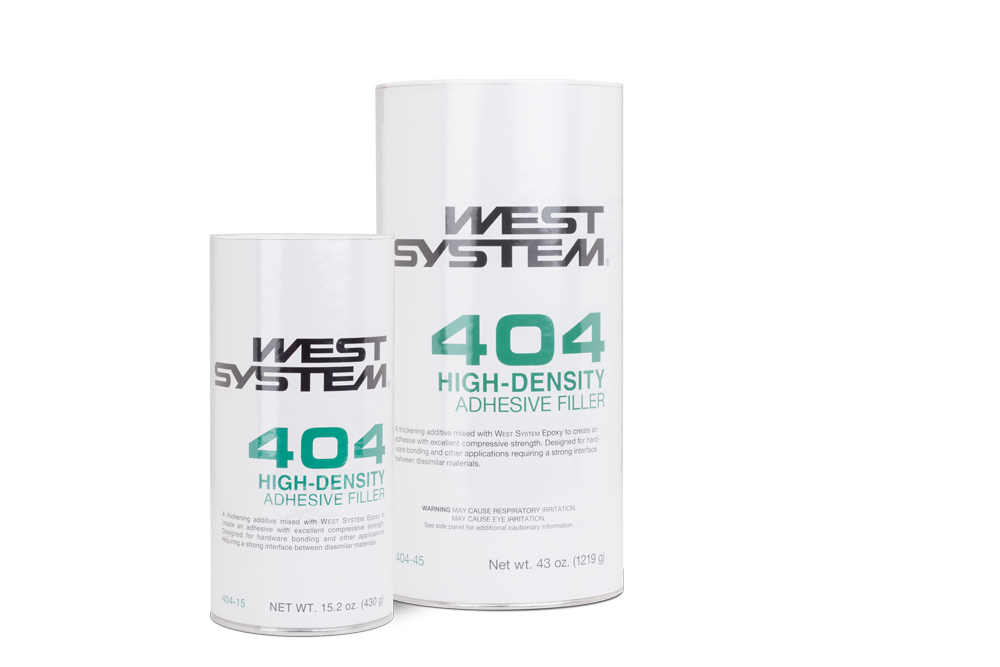
By Ronald Lane
The motor yacht Bo-Peep II is a 55′ bridge deck cruiser designed by Hacker-Fermann Naval Architects Co. of Detroit, Michigan. In 2001, BO-PEEP underwent a major refit with extensive use of WEST SYSTEM® Epoxy. Two decades later, the benefits of this approach are apparent in hull longevity and strength; dry bottom blanks, frames, and keel; a dry bilge; dry bronze thru-hull fittings, hardware fasteners staying put; shorter shipyard haul-outs; and the propeller shaft remaining properly aligned. We no longer have rotted planks or loosened fasteners to replace, seams to caulk, or corrosion headaches.
Built by Defoe Boat and Motor Works in Bay City, Michigan in 1926, Bo-Peep II has been in my wife Gene’s family since 1951. This mahogany boat was the second of four 55′ motor yachts Defoe built from this design. With her original name unchanged, Bo-Peep II has been documented by the USCG (U.S. Coast Guard) since its launch in 1926.
My father-in-law, Louis Bonner, bought Bo-Peep II in 1951 and over the years made several modifications to the boat. By the time he passed it on to his daughter Gene in 1989, the boat needed some repairs, including refastening. Of the repairs we had done at that time and since, the repairs made with WEST SYSTEM Epoxy held up best. This work was completed by shipwright Rick Ryan, who was very knowledgeable about boat repairs because his family owned several marine-related businesses.
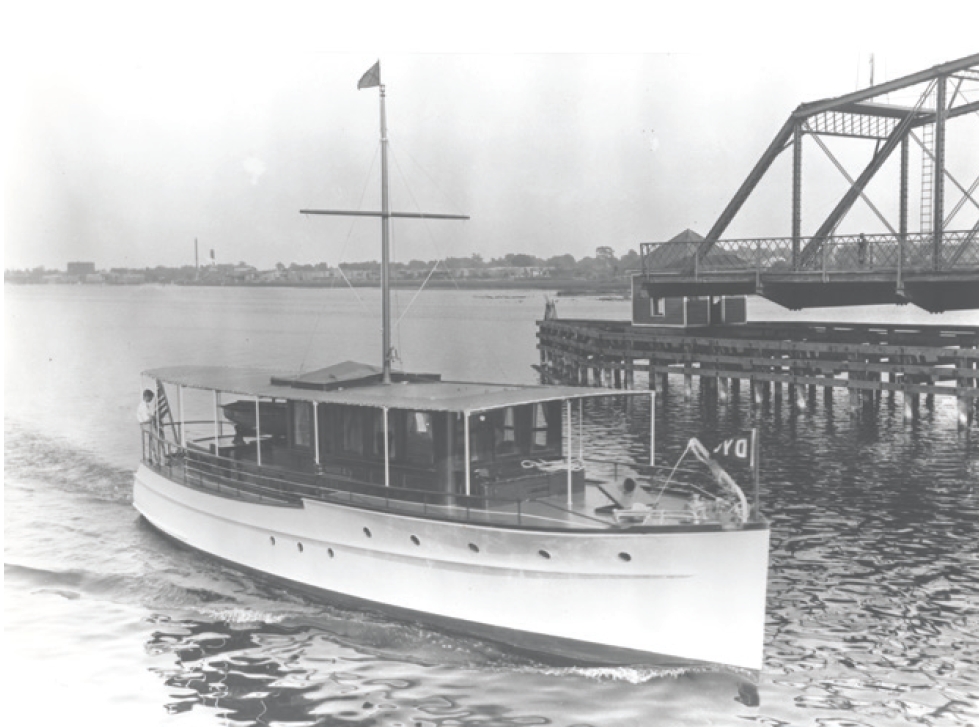
Gene and I married in 1993. We moved Bo-Peep II from Houston to Seattle by truck in 1997 because we wanted to explore one of the best places in the world for our type of cruising. We hauled out the boat in late 2000 for routine hull maintenance and to correct a laundry list of problems that a surveyor had identified:
Weakened wood in a wet area of the hull, “tired” transom planks and rot in the structural framing.
The stem knee, which hadn’t been replaced since the Fifties or Sixties, needed attention.
The upper keel, keelson, and lower frames in the bilge were rotting.
Several of the original steam-bent oak frames had been broken by lift straps when the boat was unloaded after the move in 1997.
The original iron bolt fasteners in the bilge stringers and floors were not holding due to galvanic corrosion. Some were totally consumed by corrosion.
Checks in the aged original white oak keel also needed attention again.
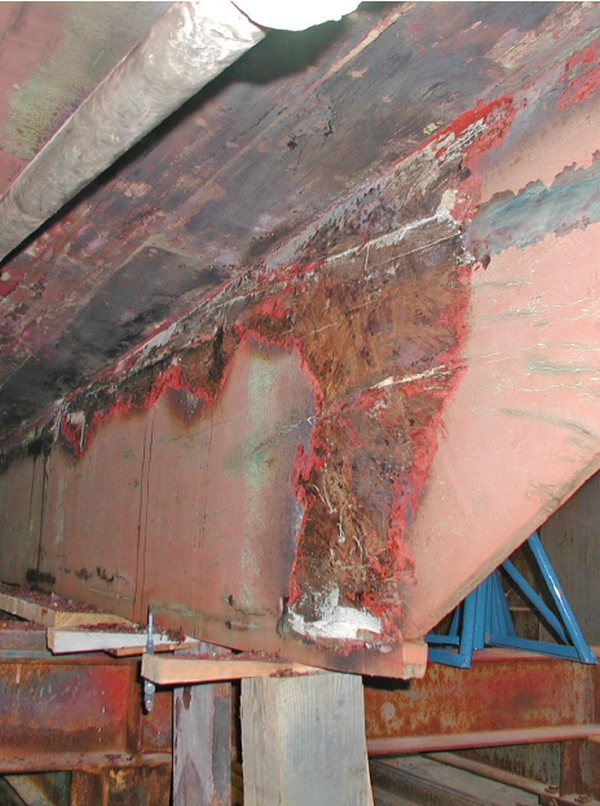
These defects were mainly the result of poorly performed repairs. The era of the previous repairs could be identified by shipwright techniques and material types. But the repairs Rick Ryan had made in 1989 with WEST SYSTEM Epoxy were still holding strong in 2000.
The joints repaired with WEST SYSTEM Epoxy were mechanically sound. The old wood repaired with epoxy didn’t break, but the wood that wasn’t epoxied broke. The plank seams that were filled with thickened epoxy remained watertight.
The lift operator in Seattle broke a plank next to the aft strut by raising the boat before the hold down chain was removed. The plank split, but the epoxy-bonded seam didn’t release: the plank leaked, the seam didn’t.
The planks were fastened with silicon bronze screws embedded in epoxy. During their removal more than a decade later there was no evidence of corrosion. The screws were epoxy bonded so securely that removing them from the frames required a mini torch. The epoxy used to repair checks, knotholes, and other defects in the keel remained sound with no deterioration. Most of these repairs were made by injecting epoxy into the void with a caulking gun.
I was impressed by the strength of the epoxy on some marginal wood repaired in 1989. I called Rick Ryan in Houston for more details about how he’d used WEST SYSTEM Epoxy. He said he’d used the Wooden Boat Restoration & Repair manual and made a few phone calls to GBI Technical Support.
We considered our choices: Continue the ongoing patchwork of “repairs as needed” requiring more frequent trips to the shipyard, or replace all the bad parts with new ones. We chose the second option, which gave us the opportunity to inspect parts of Bo Peep II not seen up close since 1926.
We based our 2001, 75-year refit plan on the knowledge of Rick’s prior repairs. However, Rick Ryan had made his repairs without the luxury of extensive disassembly and had to inject the epoxy with a caulking gun in several places. Removing the keel required a lot more disassembly and made it obvious that most of the wet area of the hull needed replacing. Many of the epoxy repairs were crosscut through during the keel removal, giving us a closer look at the original epoxy repair. Realizing that the epoxy had saved “that old wood” gave us a lot of confidence in using it on new wood.
The refit plan was to epoxy coat any wood that might be exposed to water. The number of coats would vary depending on whether the wood was likely to be occasionally exposed to moisture, or be submerged (such as outer keel and planks). Our concept was to replace the old, tired wood with new wood using exactly the same methods and sizes used by Defoe Shipyard during the boat’s construction. We would simply seal the new wood with epoxy and use epoxy thickened with 404 High-Density Filler to bond the joints.
We stayed with the traditional planking except we coated the planks with epoxy, substituted silicone bronze screw fasteners embedded in epoxy in place of the original rivets, and bonded the seams with thickened epoxy. This approach strayed a bit from Rick Ryan’s previous repairs and the Wooden Boat Restoration & Repair manual.
A Closer Look
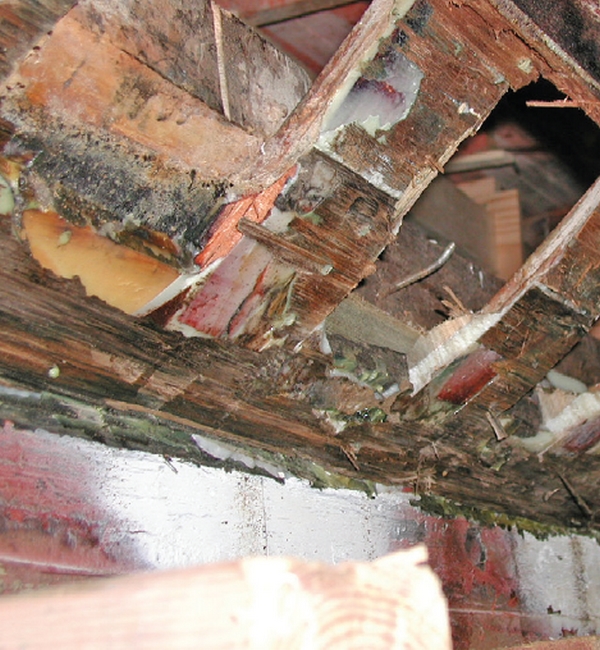
We shored up the boat under the hull for support. Initially, we removed the garboard, first, and second strake planks before starting the first stage of the rib repair. Using a chainsaw, we cut out the keel in 2′ sections, and then installed a plywood mock-up of the new keel.
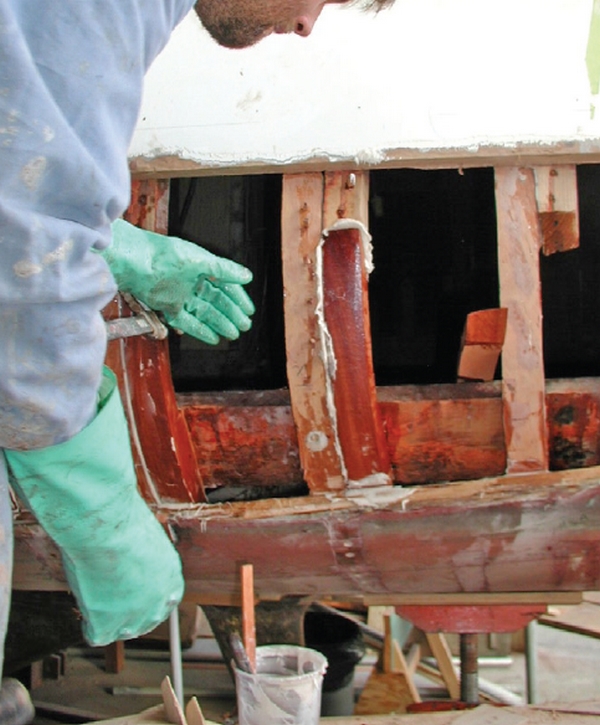
With every rib in the boat inspected, we used mahogany laminate strips and epoxy to repair the ribs. We used laminations to repair the bilge stringers where they were inaccessible under the bulkheads. Longer, accessible stringer sections were repaired with new boards and long scarf joints with epoxy. Where stringers had oversized holes caused by bolt corrosion, we double plugged the holes with epoxy and installed a new silicon bronze bolt.
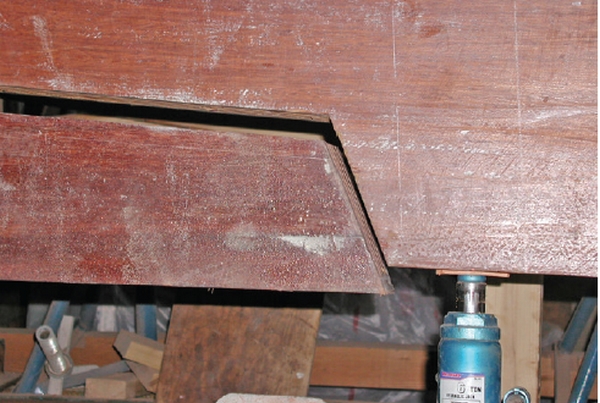
We installed the new Angélique wood keel in two sections with a very long, epoxied scarf joint. Six coats of 105/205 were applied to the keel before assembly in the boat.
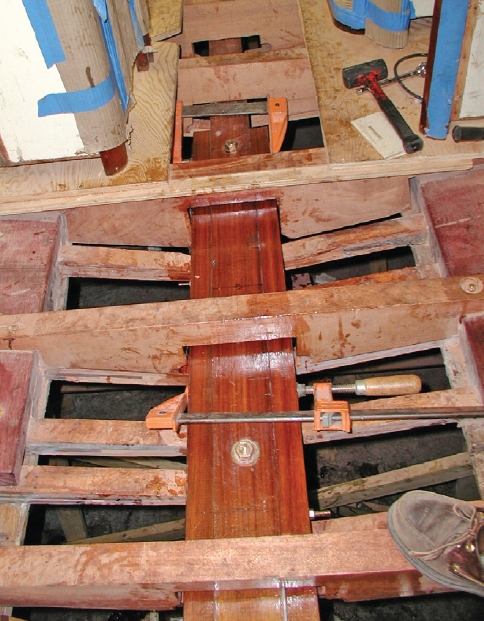
All old wood floor timbers were replaced with new mahogany.
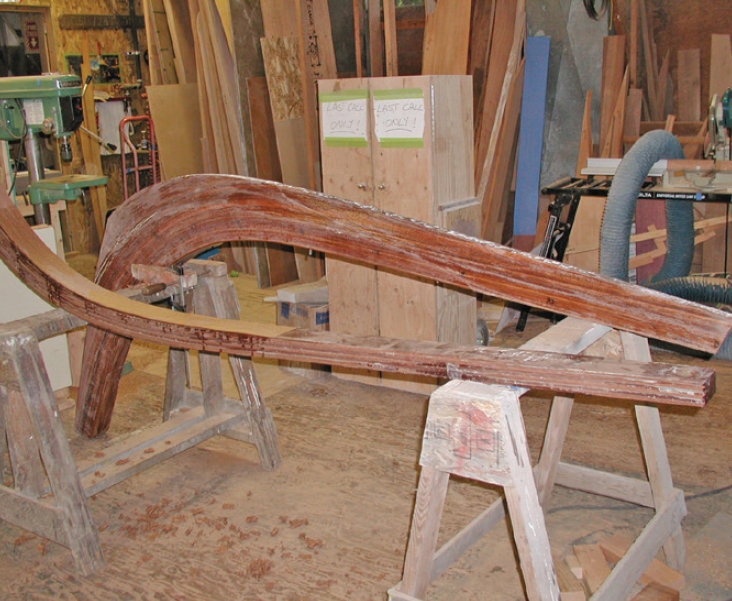
We removed the entire old bow stem and fabricated a new stem assembly (knee, apron, and cutwater) with strips of Angélique curved over a form and bonded with epoxy.
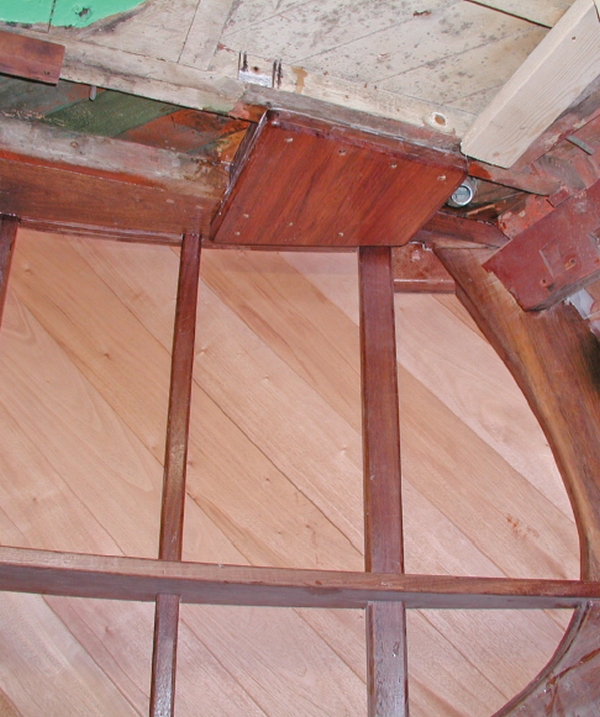
The entire transom was removed and rebuilt. The new transom framing wood is Angélique. The outer planking is steam-bent Honduran mahogany. The transom assembly is put together with silicon bronze fasteners and epoxy.
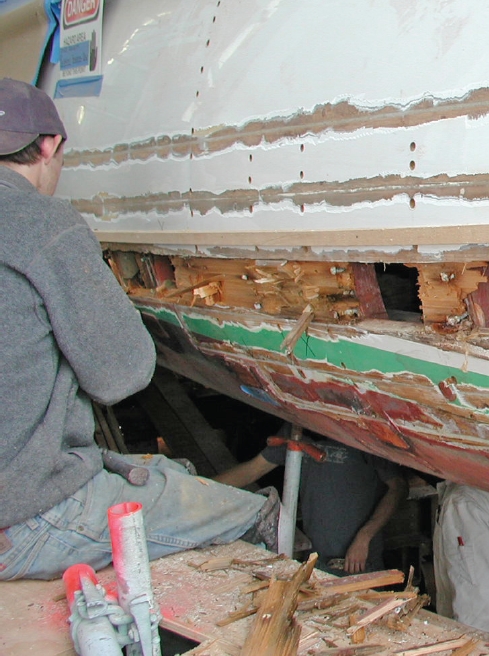
The old planks that Rick had repaired with epoxy had to be cut out in sections between frames. They were rip-cut near the silicon bronze screws and chisel cut from around the screws. We heated the screws with a mini torch to release the epoxy and backed them out with vice-grips. The holes were “pin plugged” with mahogany and epoxy.
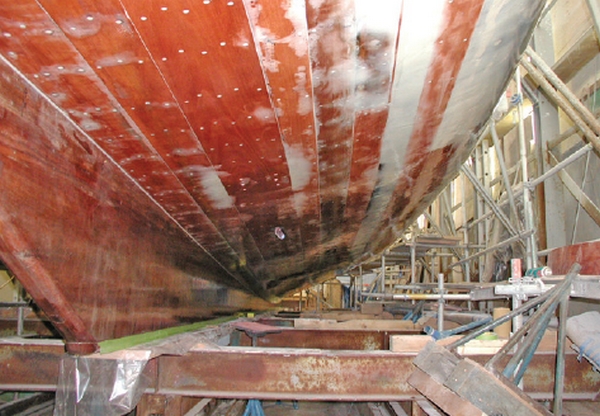
After installing the new keel, we removed and replaced all the old bottom planks that the surveyor had identified. The new mahogany planks were shaped, dry fit, and pre-drilled, then removed and epoxy coated. We wet them out with epoxy, and then liberally applied epoxy thickened with 404 High-Density Filler to both mating surfaces. The excess was squeezed out to eliminate air pockets.
When new 1½”-thick planks surrounded an older thinner plank, the thin plank was “capped.” A layer of epoxy with 404 High-Density Filler was spread on the old plank and then faired to match the thickness of the new plank.
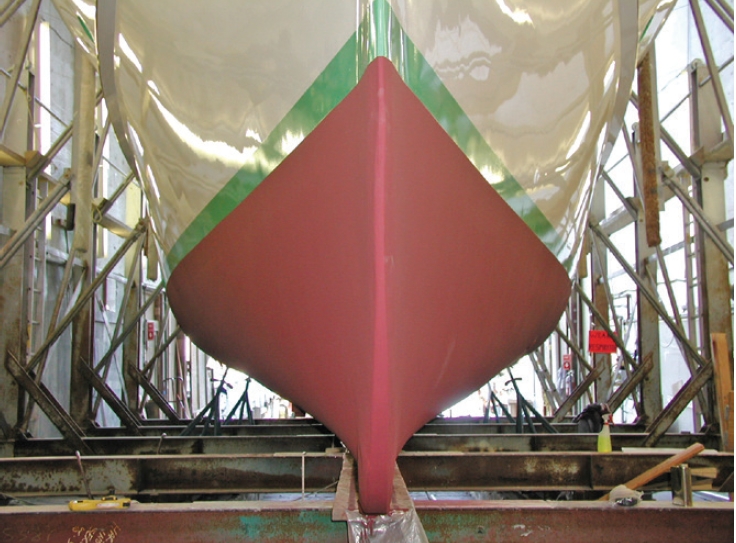
Twenty years after BO-PEEP II’s 75-year refit, here are some of the many benefits of using WEST SYSTEM epoxy:
- Greater hull longevity and strength
- Dry bottom planks, frames, and keel
- A dry bilge
- Dry bronze thru-hull fittings, screw fasteners, bolt fasteners, and wood
- Shorter shipyard haul-outs
- No “soak-swelling” the hull planks after a haul out
- Propeller shaft stays properly aligned
Read about the restoration of BO-PEEP II’s tender.
